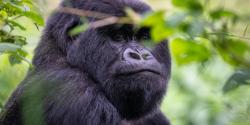This cat is known by many names such as mountain Lion, catamount, cougar, and panther.
Early Spanish explorers of North and South America called it “leon” which means lion and “gato monte” which means cat of the mountain. These names led to the name "Mountain Lion". The Incas named this cat puma in their language. Cougar seems to have come from the old South American Indian word “cuguacuarana” which was shortened to “cuguar” and then spelled differently. Panther is a general term for cats that have solid-colored coats, so it was used for pumas as well as black jaguars. All of these names are considered correct, but scientists usually use the name “Puma”.
Scientific Name: Puma concolor
Conservation Status: Least Concern
Size: Head and body length can range from 3 to 5 feet, with males generally larger than females. Tail length can range from 2 to 3 feet.
Weight: Males can weigh from 80 to more than 25 pounds. Females are generally smaller and weigh from 60 to 140 pounds.















